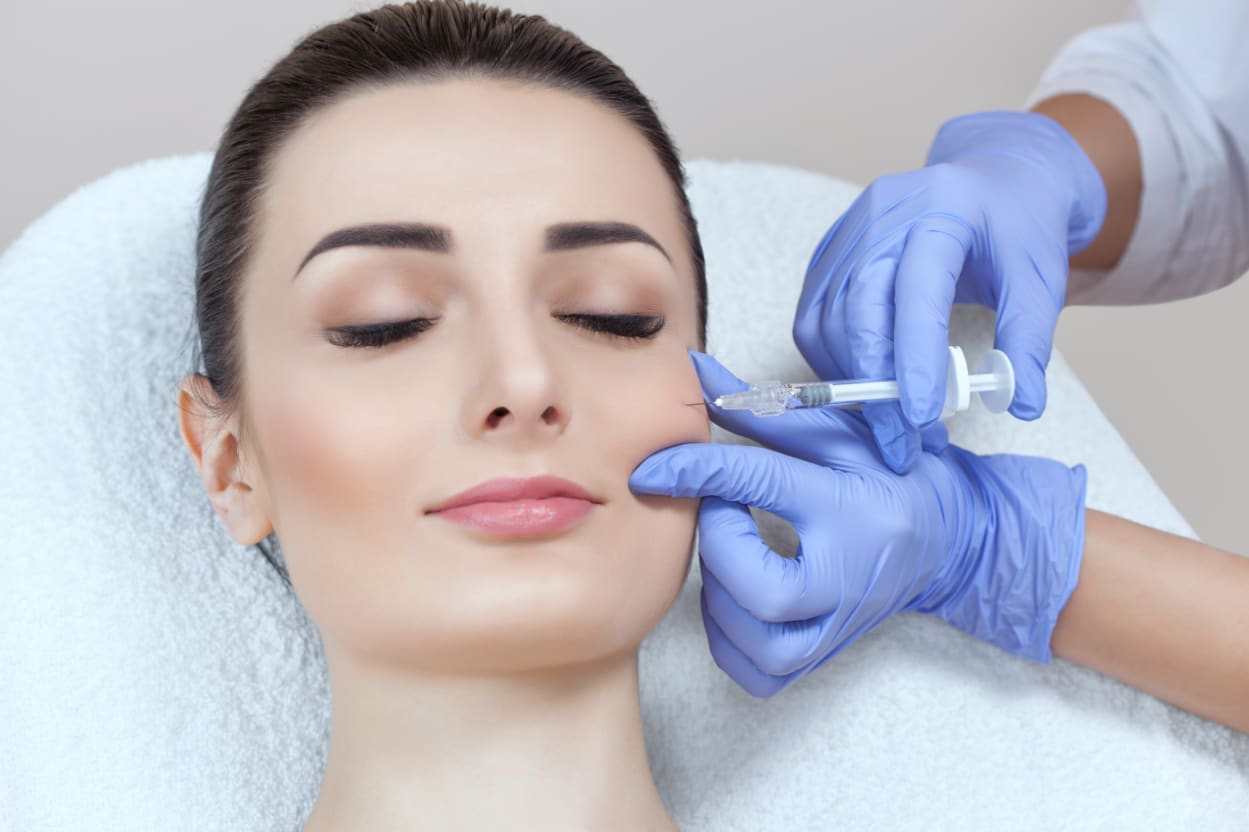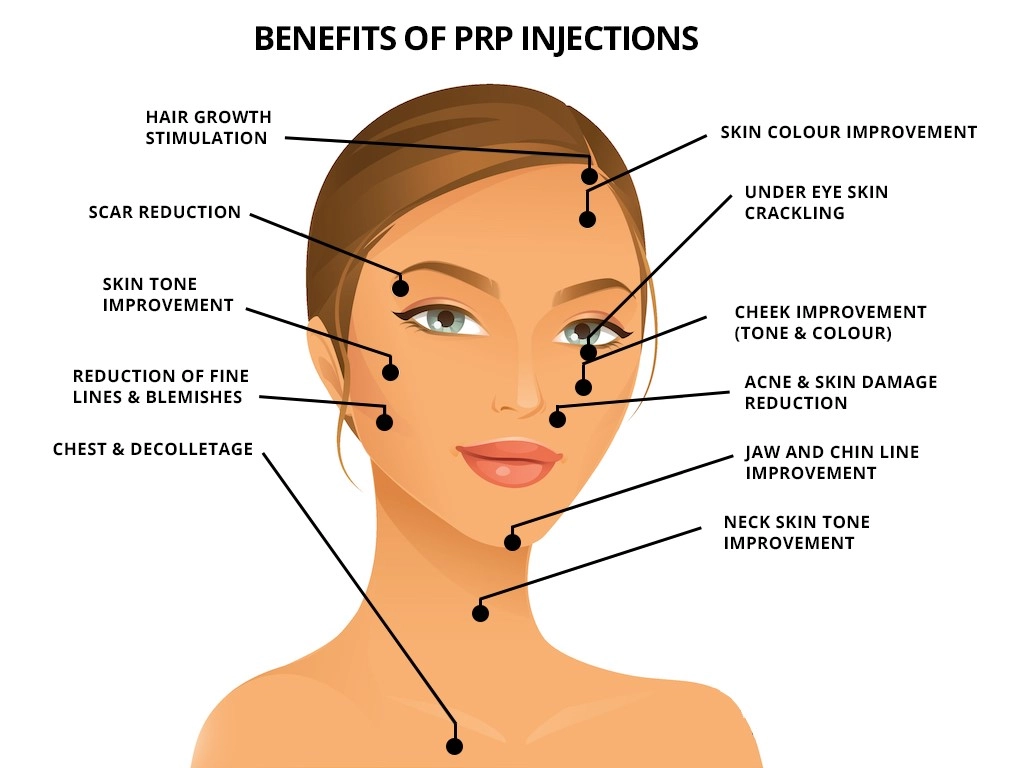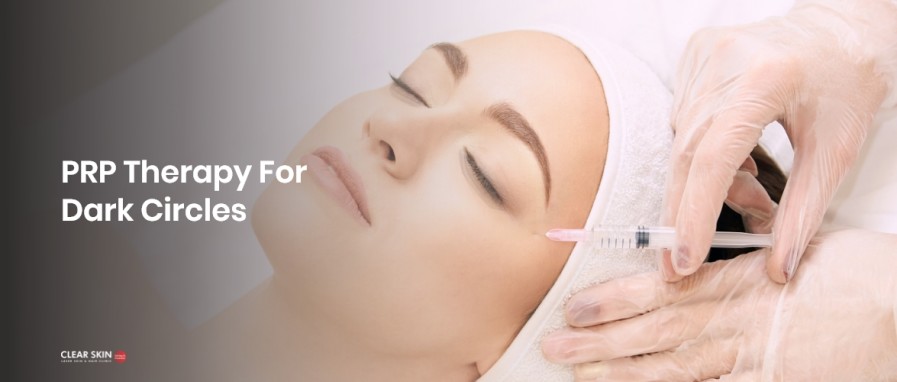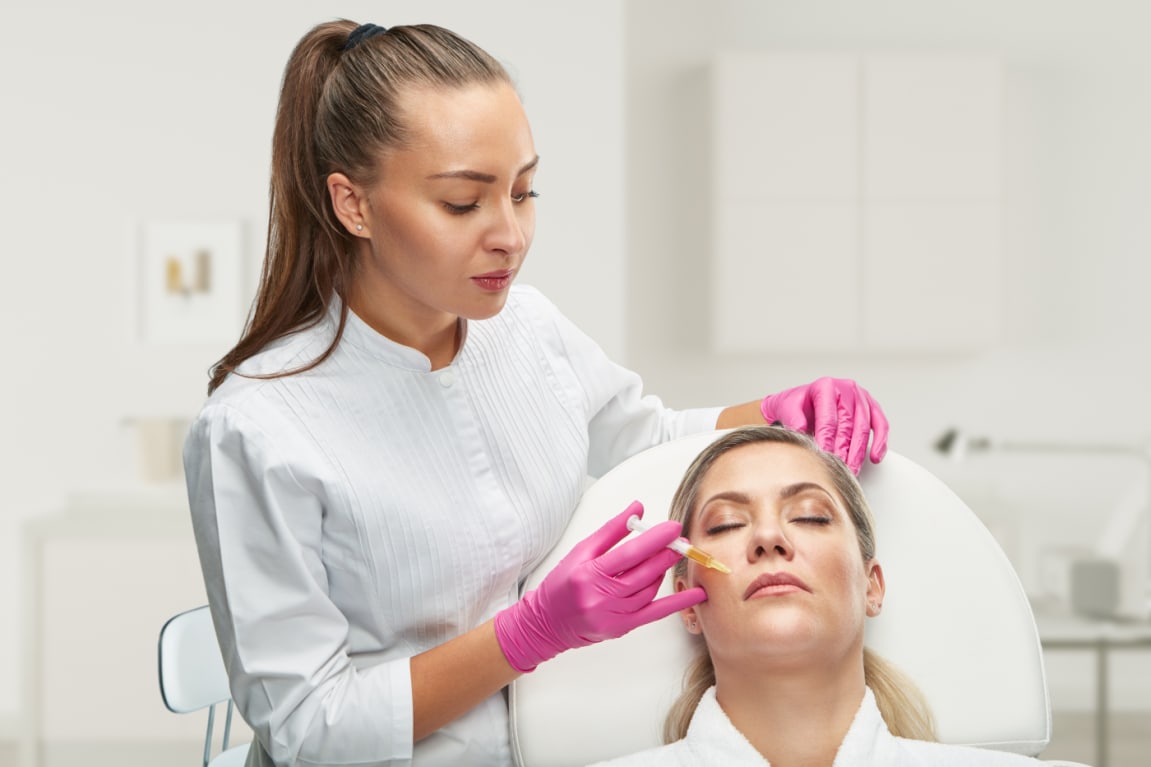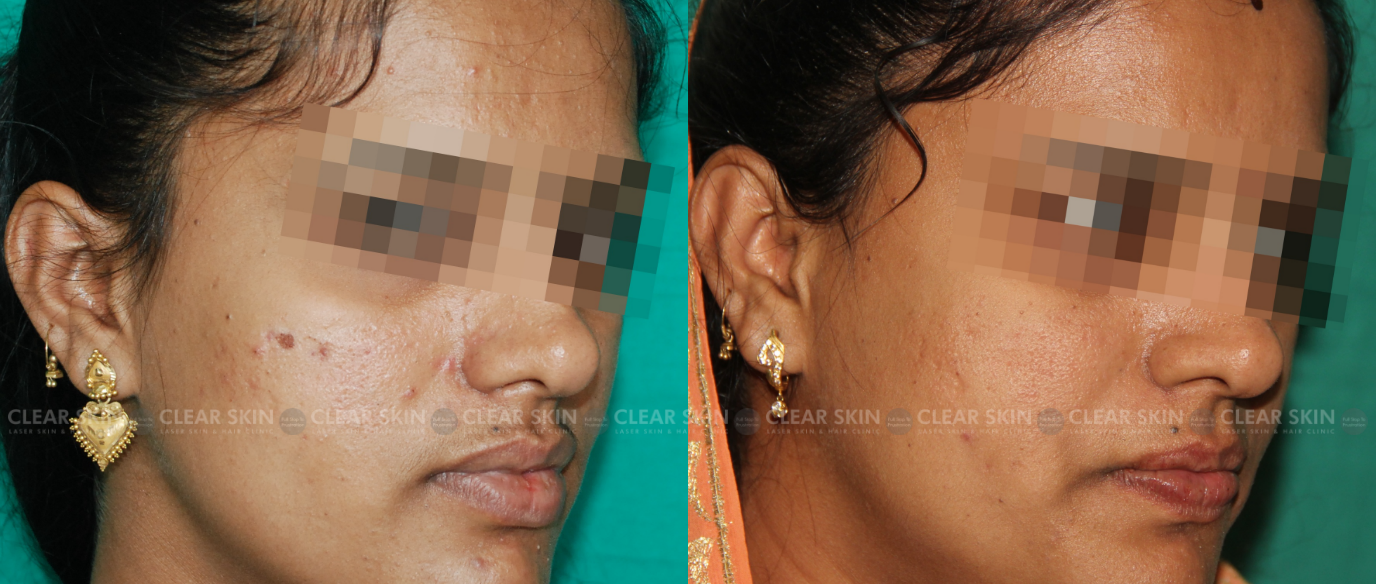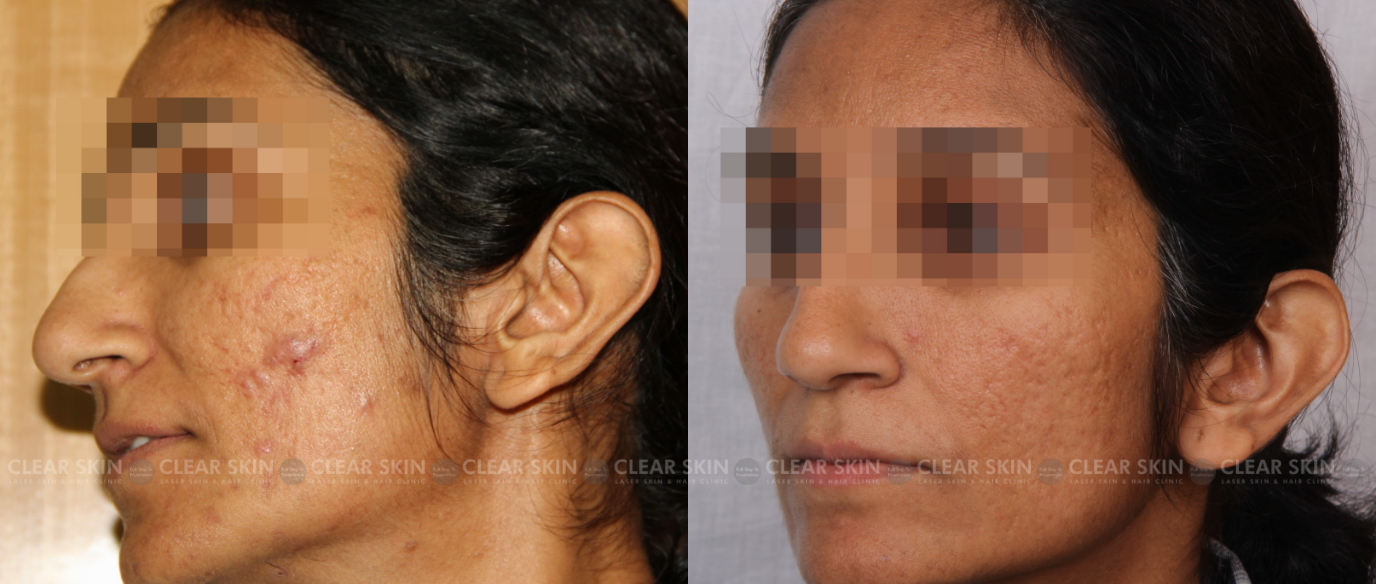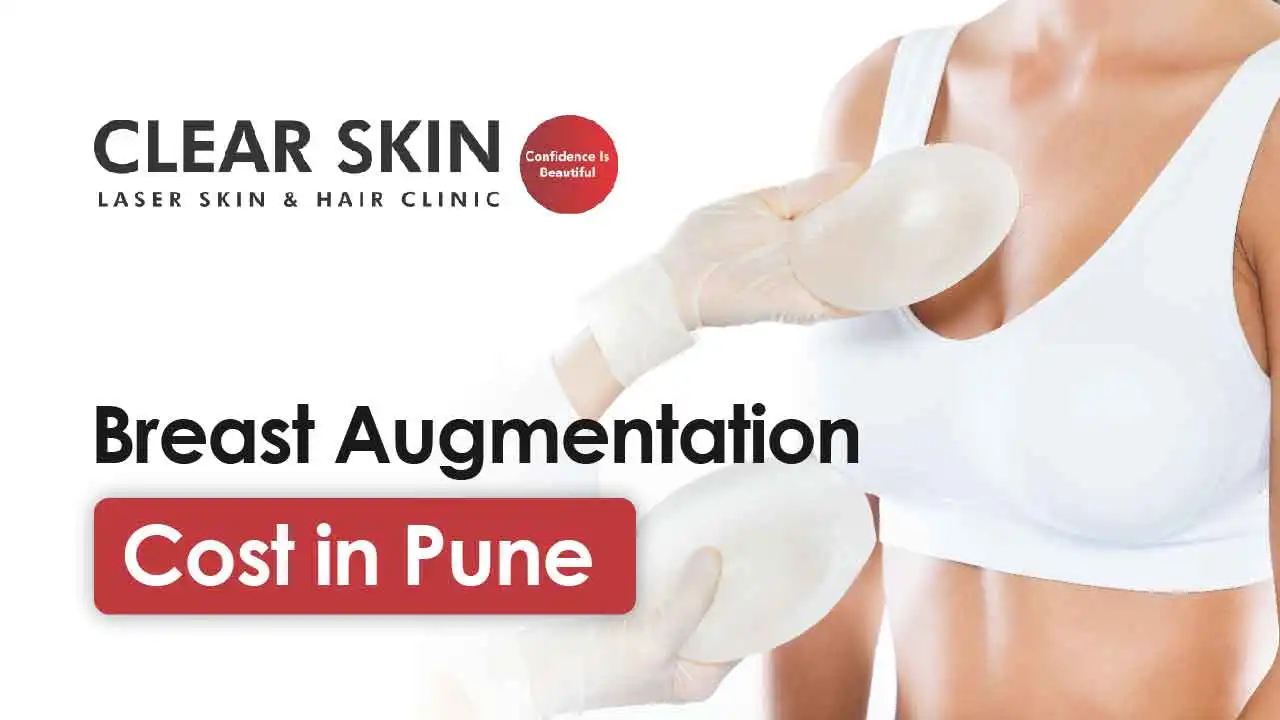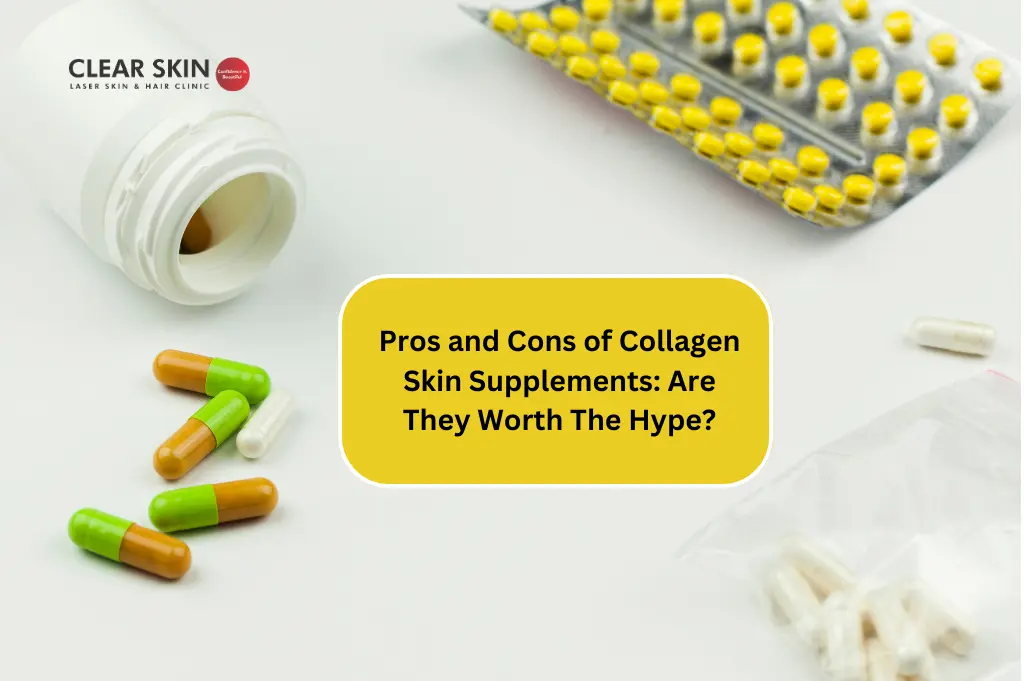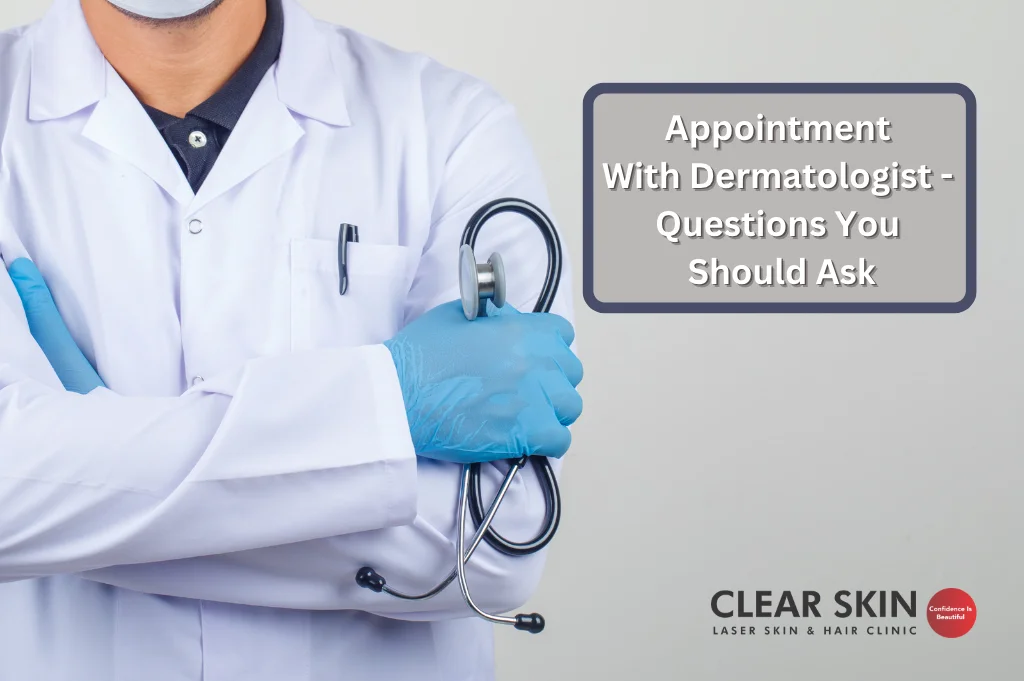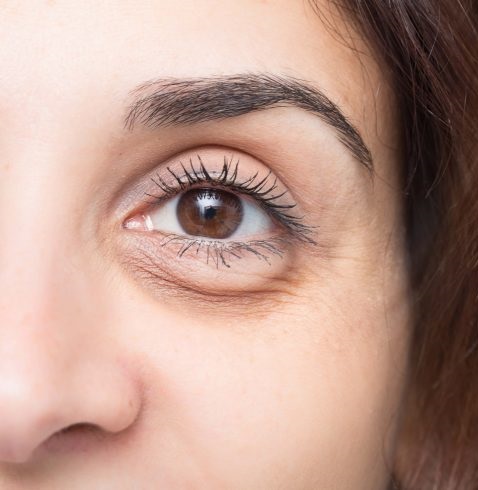Treatment
Platelet-Rich Plasma Therapy
PRP treatment involves injecting your platelet-rich plasma into your skin to repair it and reduce scars and other visible signs of aging. This is often used to treat delicate and difficult-to-treat areas like the skin under the eyes. The patient’s own blood is centrifuged to form platelet-rich plasma and injected into the skin to stimulate the process of regeneration of skin cells and collagen. Platelet-rich plasma (PRP) therapy uses concentrated plasma that contains approximately 3 to 5 times the number of platelets found in normal circulating blood which contains various growth factors and other biological mediators that help in the rejuvenation of the skin.
Are you looking for a safe and effective treatment for your skin problems? Have you heard about PRP treatment?
PRP, which stands for platelet-rich plasma therapy, is a skin rejuvenation treatment that uses a patient’s own blood to treat various skin conditions.
Platelet-rich plasma (PRP) injection treatment is gaining popularity in sports science and dermatology. While the US Food and Drug Administration has only approved its use in bone graft treatments, doctors also use PRP to promote hair growth, muscle healing, face skin rejuvenation, dark circles, melasma, and wrinkles treatment.
Platelet-rich plasma (PRP) stimulates skin cell regeneration and collagen production. PRP is obtained by centrifuging the patient’s blood to separate the platelets from the other blood cells. The PRP is then injected into the skin under the eyes or other delicate and difficult-to-treat areas.
PRP contains various growth factors and other biological mediators that help rejuvenate the skin. These growth factors stimulate the production of new skin cells and collagen, which can help to reduce wrinkles, improve skin texture, and plump up the skin under the eyes.
In this guide, we will discuss PRP treatment and how it works in detail.
What is PRP Treatment?
What is platelet-rich plasma?
Before diving deep into Platelet Rich Plasma Treatment, first, understand what platelet-rich plasma or PRP is.

Blood is mainly liquid, called plasma, but it also contains tiny solid components such as red cells, white cells, and platelets. Platelets play a vital role in clotting blood and healing wounds. However, platelets also contain hundreds of proteins called growth factors that are very important in the rejuvenation of the skin.
PRP is plasma that contains far more platelets than normal blood. Platelet concentrations corresponding to growth factor concentrations can be 3 to 5 times higher than in normal blood.
What is a PRP Injection?
A PRP injection is a minimally invasive procedure that uses your own blood platelets to rejuvenate the skin.
During PRP therapy, the doctor draws a small amount of blood and spins it in a centrifuge to separate the platelets from the other blood cells. These concentrated platelets are then injected into the skin, where they stimulate the production of new collagen and elastin.
PRP injections can be used to treat various skin conditions, including:
- Wrinkles
- Fine lines
- Acne scars
- Uneven skin texture
- Melasma
PRP injections are a relatively new procedure, and there is still some debate about their effectiveness. However, many studies have shown that PRP can be effective in improving the appearance of the skin.
How PRP Treatment Works?
As we age, our skin naturally produces less collagen and elastin, which can lead to wrinkles, fine lines, and sagging skin. PRP treatment helps to reverse this process by stimulating the production of new collagen and elastin. This can result in smoother, tighter, and younger-looking skin.
The PRP treatment process can be divided into three main steps: blood extraction, centrifugation, and injection.
Blood Extraction

The first step in the PRP treatment process is blood extraction. Your doctor will draw a small amount of blood from your arm, typically using a needle and syringe. The amount of blood extracted will vary depending on the size of the area being treated.
Centrifugation

Once the blood has been extracted, it is placed in a centrifuge and spun at a high speed. This process separates the platelets from the other blood cells, usually taking about 15 minutes. The centrifuge spins the blood at a force that is greater than gravity. This causes the heavier blood cells to settle at the bottom of the tube while the lighter platelets remain suspended in the plasma.
Injection/Application
Once the platelets have been separated from the other blood cells, they are collected and concentrated into a small volume of plasma. This platelet-rich plasma is then injected into the areas of your skin that you want to treat.

Before injecting PRP, your doctor will numb the injection site with topical anesthesia. After applying numbing cream, your doctor will inject PRP into the correct location under ultrasound guidance. This can be done using a needle and syringe or with a special device called a micro-needling roller. The injection process typically takes about 15 minutes.

After the PRP injection, you may experience some mild pain and swelling at the injection site. But it is usually temporary and goes away within a few days.
It can also be applied topically to the skin using a microneedling device. Your doctor will determine which application method is best for you based on your individual needs.
What is the PRP Treatment Procedure?
Platelet-rich plasma (PRP) treatment is a regenerative medicine procedure and can be performed in an outpatient setting. It typically takes about an hour or less. A typical PRP treatment procedure involves the following steps:

Consultation: The PRP treatment procedure starts with a thorough consultation with an experienced dermatologist. During this consultation, your doctor will explain the entire process, its benefits and risks, and your goals and expectations for the procedure. Your doctor will also assess your medical history and current health condition to determine if PRP treatment is right for you.
Preparation: To prepare for the procedure, your doctor will ask you to stop taking blood thinners, such as aspirin or ibuprofen, for several days before the treatment. Because these medications can interfere with the healing process, you will be asked to avoid eating or drinking anything for at least two hours before the treatment.
Treatment: On the day of the procedure, your doctor will draw a small amount of blood from your arm, similar to a routine blood test. The blood will then be processed in a centrifuge to separate the platelets from the other blood components.
While the plasma is being separated, the dermatologist performs the Dermapen micro-needling procedure. The concentrated platelet-rich plasma (PRP) will be injected into the treatment area using a small needle. The number of injections and the amount of PRP injected will vary depending on the size and location of the treatment area.
To achieve the best results from PRP therapy, it is recommended to have 3 sessions spaced 4-6 weeks apart. The first noticeable effect will be an improvement in skin texture within the first month. Most collagen is reproduced within 3 months of treatment completion, resulting in a more lifted and youthful appearance with fewer wrinkles and lines.
Post-treatment Care
After the PRP injection, you may experience some minor swelling and bruising at the injection site. These side effects are usually mild and resolve within a few days.
Most patients can return to their normal activities immediately after the PRP injection. However, some patients may need to restrict their activities for a short period, depending on the treated condition.
PRP treatment is a relatively safe procedure with few risks. However, there are some potential side effects, such as infection, bleeding, and nerve damage. These side effects can be eliminated by following a few tips including:
- Your dermatologist may apply bandages to the injection sites.
- Apply ice to the injection site for 15-20 minutes to reduce swelling and discomfort.
- Avoid strenuous activity for 24-48 hours after the procedure.
- Avoid applying any other makeup products to your face for 24 hours after the procedure.
- Your doctor may prescribe pain medication or antibiotics to prevent infection.
- Avoid scrubbing the treatment area for 48 hours.
- Avoid taking medications for at least 7-20 days after the treatment.
- Keep your skin hydrated with moisturizers.
- Wear sunscreen daily to protect your skin from the sun’s harmful UV rays.
You will need to follow up with your dermatologist for regular check-ups to assess the results of your PRP treatment. The number of follow-up appointments needed depends on the condition being treated.
What Are The Benefits Of PRP Treatment For Face Skin Rejuvenation?
Platelet-rich plasma (PRP) therapy is a highly effective treatment for many skin conditions, helping to improve the overall health and appearance of the skin and hair. It offers several benefits, including:

Reduced Fine Lines and Wrinkles: PRP injections can increase the production of collagen and elastin, two proteins that give skin a youthful appearance. As a result, fine lines and wrinkles can become less noticeable.
Improved Skin Texture: PRP injections can also help to improve skin texture by reducing the appearance of pores and scars.
Reduced Acne Scars: PRP injections can help minimize the appearance of acne scars by stimulating the production of new skin cells.
Reduced Hyperpigmentation: PRP can help to reduce the appearance of hyperpigmentation, such as age spots and sunspots.
Plumped Up Sagging Skin: PRP can help to plump up sagging skin by stimulating the production of new tissue.
Increased Skin Thickness and Hydration: PRP therapy can help to increase the thickness and hydration of the skin by stimulating the production of hyaluronic acid. Hyaluronic acid is a substance that helps to keep the skin hydrated and plump.
Reduced Appearance of Dark Circles Under the Eyes: PRP can help to reduce the appearance of dark circles under the eyes by stimulating the production of collagen and elastin.
Other benefits of PRP may include:
- Reduced Hair Loss: PRP therapy can help reduce hair loss and promote growth. Platelets contain growth factors that can stimulate the hair follicles to produce new hair. PRP therapy is often used to treat male pattern baldness and hair loss caused by other factors such as stress, illness, or medications.
- Improved Hair Thickness: PRP therapy can also help to increase hair thickness. This is because the growth factors in platelets can stimulate the hair follicles to produce thicker hair shafts. PRP therapy is often used to treat thinning hair on the scalp, as well as on other areas of the body, such as the eyebrows and eyelashes.
- Improved Scalp Health: PRP therapy can improve scalp health by increasing blood flow to the scalp, which is essential for healthy hair growth. Also, PRP can stimulate the production of collagen and elastin, the proteins that give the scalp its structure and support.

Dark circles under the eyes can be caused by various factors, including aging, genetics, allergies, and lifestyle choices. As we age, the skin around our eyes becomes thinner and loosened, so the blood vessels underneath the skin are more visible, resulting in dark circles. Additionally, allergies and certain lifestyle choices, such as smoking and lack of sleep, can also contribute to dark circles.
PRP therapy can help to reduce the appearance of dark circles by:
- Increasing the production of collagen and elastin, proteins that give the skin its structure and elasticity.
- Thickening the skin under the eyes.
- Improving blood circulation.
- Reducing melanin production.
- Removing swelling caused by toxins and excess fluid accumulation.
Dark circles can’t go overnight. You may need multiple PRP treatments to achieve the desired results. The number of treatments required will vary depending on the severity of your dark circles, your age and your individual response to the treatment. Your doctor will first evaluate your skin condition and then schedule two to three or more PRP treatment sessions spaced four to six weeks apart. This will give your skin time to heal and ensure the best results. You will start to see results shortly after the first session.
PRP therapy is safe and effective, as your own blood is used for the treatment. You may experience minor bruising, swelling, and pain at the injection sites, which typically resolve within a few days. Applying a topical anesthetic cream before the procedure can reduce these side effects.
PRP Therapy For Anti Aging For Fine Lines And Wrinkles

As we age, our faces naturally change, and fine lines and wrinkles may appear due to the reduced production of collagen and elastin. Fortunately, there are now skin treatments available to help us address these changes. One popular treatment is PRP therapy.
How does PRP therapy work for fine lines and wrinkles?
PRP therapy works for fine lines and wrinkles by stimulating the production of collagen and elastin. The platelets in PRP contain growth factors that can help to stimulate the production of these two proteins, which are essential for youthful-looking skin. Collagen and elastin help to keep your skin plump and firm and also play a role in wound healing. PRP therapy also helps to improve the overall tone and texture of the skin.
PRP is made by drawing a small amount of your blood and spinning it in a centrifuge to separate the platelets from the other blood cells. The platelets are then concentrated and injected into your skin using a fine needle.
The procedure typically takes about an hour to complete and has minimal downtime. Bruising and swelling may occur at the injection sites, but they usually resolve within a few days.
Most people notice a significant improvement in their skin after just one PRP treatment. However, some people may need multiple treatments to achieve the desired results.
Note: PRP therapy is not a good treatment option for people with blood cancer, hepatitis C, skin cancer, cardiovascular disease, or HIV or AIDS. These conditions can make it difficult for the body to produce healthy platelets, which are essential for PRP therapy success.
Benefits of PRP Therapy For Melasma
Melasma is a common skin condition that causes dark, patchy facial areas. It is caused by an overproduction of melanin, the pigment that gives skin its colour. It is often caused by hormonal changes, sun exposure, or genetics. Melasma can be difficult to treat, but platelet-rich plasma (PRP) therapy effectively reduces the appearance of melasma patches.
PRP therapy works by injecting concentrated platelets into the skin. Platelets contain growth factors that stimulate collagen production and cell turnover. This can help to reduce the appearance of melasma by fading the brown or gray patches and hyperpigmentation and improving the overall texture and tone of the skin. Platelet-rich plasma (PRP) also has anti-inflammatory properties, which can reduce redness and irritation associated with melasma.
PRP therapy is a safe and effective treatment for melasma, and it can be used on all skin types. It is also a relatively quick and easy procedure with minimal downtime. You can resume your normal activities immediately after treatment. The results of PRP therapy may vary depending on how severe your melasma is.
If you are considering PRP therapy for melasma, consult with a board-certified dermatologist to discuss your individual needs and goals.
What is The Cost of PRP Treatment In India?
PRP is a safe and affordable treatment. In general, it costs between Rs 8000 and Rs 10,000 per session. However, the PRP treatment cost varies depending on various factors, like the skin area, the condition being treated, and the number of sessions required. The cost will increase with the number of sessions needed and, therefore, vary from person to person.
Other factors that could impact the PRP treatment cost in India may include:
Location of the Clinic: Metropolitan areas (Pimple Saudagar, Kharadi) and major urban centers (Such as Pune) typically have higher prices due to increased overheads, while smaller towns and cities may offer more competitive rates.
Equipment Used: The type of equipment and materials used in the PRP procedure can also affect the PRP injection cost. High-quality centrifuges for blood processing and premium-quality kits may increase the overall price.
Clinic Reputation: Established and reputable clinics with experienced and qualified dermatologists often charge higher fees.
Additional Services: Some clinics may offer package deals or combine PRP therapy with other cosmetic procedures, which can affect the overall cost.
What Are Customized PRP Treatment Plans?
Every person’s skin is different. Therefore, the one-size-fits-all approach to PRP does not work for everyone. In that case, a customized treatment plan is designed to meet the specific needs of each patient based on various factors, including:
- Medical history of a patient
- Age of the patient
- Type of condition being treated
- Patient’s response to treatment
- Patient’s lifestyle and activity level
- Patient’s personal goals
Personalized PRP treatment plans ensure that each patient receives the best possible care. By tailoring the treatment to the individual patient’s needs, the risk of side effects is reduced, and the chances of success increase.
How Does Our Clinic Tailor PRP Treatment Plan for Your Individual Needs?
A personalized approach to PRP treatment is important because everyone’s skin is different, and what works for one person may not work for another. Therefore, we take the time to get to know each patient and understand their needs. We then develop a treatment plan that is tailored to their specific goals.
How Do We Do This?
- We take a detailed medical history and perform a physical examination.
- We discuss the patient’s goals and expectations.
- We create a treatment plan tailored to the patient’s condition and goals.
- We monitor the patient’s progress and adjust the treatment plan if required.
Importance of A Personalized Approach
A personalized approach to platelet-rich plasma Treatment is important for several reasons.
- It ensures that the treatment is safe and effective for a particular individual.
- It results in better outcomes and a higher satisfaction rate among patients.
- It reduces the risk of side effects.
If you are considering PRP treatment, it is important to choose a clinic that offers personalized treatment plans. This will ensure you receive the best possible care and achieve your desired results.
What Are The Before And After Effects Of PRP Treatment On The Face?

Platelet-rich plasma (PRP) treatment for the face can improve skin tone and texture, reduce the appearance of acne scars, tighten the skin, lighten dark spots, and brighten the complexion. You can compare the PRP before and after effects.
Before PRP treatment, your skin may show signs of aging, such as wrinkles, fine lines, uneven skin tone and age spots. You may also have acne scars or other blemishes. Your skin may appear dull and dry.
After PRP treatment, you may notice significant improvements in your skin. You can notice:
- Reduced wrinkles and fine lines
- Smoother, more even skin tone
- Brighter, more radiant skin
- Reduced acne scars
- Improved skin texture
- The skin may appear more hydrated, plump
The results of PRP treatment on the face can last up to 18 months. However, some people may need touch-up treatments every 6-12 months to maintain their results.
Each person’s body reacts to PRP treatment differently, so the results will vary. Other factors, such as genetics, age, and sun exposure, can also affect the outcome.
Unlike a traditional facial, PRP uses your body’s blood, so it is safe and can be repeated without damaging your skin. This means that you can schedule a maintenance session as soon as your results start to fade. With regular maintenance treatments, you can enjoy lasting results.
Before and After Photos of PRP Treatment
Here are some before and after photos of our patients who opted for PRP treatment.


FAQ Section
Q1: What is the cost of a PRP treatment?
PRP is considered a popular treatment. In general, it costs between Rs 8000 and Rs 10,000 per session. However, the cost of PRP treatment can vary depending on the location of the clinic, the experience of the provider, and the number of treatments required.
Q2: How painful is PRP treatment?
PRP treatment is considered a minimally invasive procedure performed under topical anesthesia. Most people experience mild discomfort during the injection process, usually described as a tingling or burning sensation. However, the pain is generally very mild and goes away quickly.
Q3: What is the recovery time for PRP treatment?
The recovery time from PRP treatment is also very short. You can return to your normal activities immediately after the procedure. However, some patients may experience minor bruising, swelling, or redness at the injection site, which is normal and usually goes away within a few days.
Q4: Is PRP safe?
In PRP treatment, the patient’s own blood is used; therefore, the treatment is safe. There is a very low risk of side effects, such as infection or bleeding. However, choosing a qualified and experienced dermatologist to perform the procedure can eliminate these risks.
Q5: How long do PRP results last?
The results of PRP treatment vary from person to person. However, most patients see results that last for 12-18 months.
Q6: How many PRP treatments do I need?
The number of PRP treatments needed varies depending on the patient’s needs and goals. Some people may see results after just one treatment, while others may require several treatments.
Q7: Who is a good candidate for PRP treatment?
A good candidate for PRP treatment is someone who is in good overall health and has realistic expectations about the results. PRP treatment is most effective for people with mild to moderate skin conditions, such as acne scars, fine lines, and wrinkles. It is also effective for people with hair loss, tendonitis, ligament injuries, muscle injuries, and osteoarthritis.
Q8: What conditions can PRP treatment be used to treat?
Platelet Rich Plasma Treatment can treat conditions such as skin rejuvenation, acne scars, melasma, uneven skin tone, hyperpigmentation, fine lines and wrinkles, and hair loss.
Q9: How does PRP treatment work?
PRP treatment stimulates collagen production and other tissues. The growth factors in PRP can help heal damaged skin and improve its overall appearance.
Q10: How long does PRP treatment take?
PRP treatment usually takes about 45 minutes to 1 hour. This includes the time it takes to draw blood, prepare the PRP, and inject it into the treatment area. You will be able to go home the same day.
Testimonials and Reviews
PRP treatment has become increasingly popular in recent years as more and more people look for natural and effective ways to improve their appearance. PRP contains growth factors that can stimulate collagen and elastin production, improve skin texture and tone, and reduce the appearance of wrinkles and fine lines. It can also treat acne scars, sun damage, and other skin conditions.
Here are some testimonials and reviews from people who have had PRP treatment from Clear Skin Clinics Pune:
- One of our patients had Platelet Rich Plasma Treatment for skin rejuvenation. She had noticed visible results in just two sessions. She is very impressed with the treatment and team.

- Mayuri Sawant was frustrated with her skin and hair problems. She has undergone PRP treatment for acne scars and hyperpigmentation. She is very happy with the results.

- Mr. Tushar Bharme selected Clear Skin Clinic for scar treatment. He is very impressed with the doctors’ experience and is highly satisfied with the results.

Overall, PRP treatment is a safe and effective way to improve the appearance of skin. It is a minimally invasive procedure with little downtime, and the results can be long-lasting.
Conclusion!
Platelet-rich plasma (PRP) injections are a safe and effective way to improve the appearance of skin. They can help to reduce the appearance of wrinkles and fine lines, improve skin texture and tone, and reduce the appearance of acne scars, hyperpigmentation, and sun damage.
PRP treatment is not a one-size-fits-all treatment. The number of injections needed and the frequency of treatments will vary depending on the individual patient’s needs and goals. Therefore, it’s always advisable to consult an experienced and knowledgeable dermatologist for effective outcomes.
If you are looking for a PRP skin treatment, look no further than Clear Skin Clinics Pune. Our experienced dermatologists will evaluate your skin condition and create a customizable PRP treatment plan for you.

